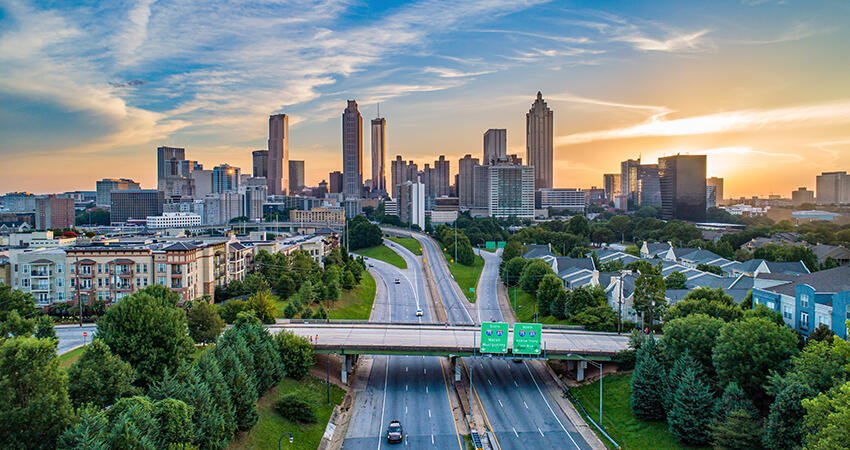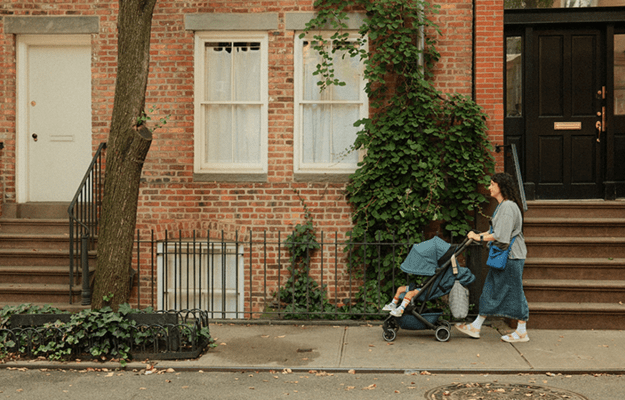
(Kevin Ruck/Shutterstock)
Racial Appreciation Gap Limits Financial Benefits of Black Homeownership
- Title:
-
The Limits of Homeownership: Racial Capitalism, Black Wealth, and the Appreciation Gap in Atlanta
- Author:
-
Scott N. Markley, Taylor J. Hafley, Coleman A. Allums, Steven R. Holloway, Hee Cheol Chung
- Source:
- Publication Date:
-
2020
In the decade following the 2007–08 housing crash, the Black-white wealth gap expanded, largely because Black people experienced disproportionate foreclosures spurred by predatory and subprime loans. Homeownership plays a large role in wealth building, so many researchers and policymakers have focused on increasing Black homeownership rates to narrow the wealth gap. But others contend that the racism embedded in home price appreciation restricts the impact of homeownership in building Black wealth. In this study, the authors analyze how neighborhood racial and income characteristics structured home price appreciation from before the height of the housing boom to postcrisis recovery.
First, the researchers reviewed critical historical analyses of racial capitalism and property ownership in the United States to track the origin of material inequality between Black and white people. The authors posit that the “racial appreciation gap” is one way racial capitalism continues to govern wealth and homeownership in the United States.
With this frame, the researchers then modeled home price change using parcel-level repeat sales data for homes sold before the height of the housing boom (2000–03) and after the Great Recession (2014–16) in two counties within metropolitan Atlanta, Georgia. They selected Atlanta for three key reasons. First, the effects of the housing crisis (both subprime mortgages and foreclosures and postrecession recovery) are clearly racially uneven. Second, metro Atlanta is identified as a “high-appreciation metro” and has a large share of majority-Black census tracts (27.6 percent). Third, Atlanta has a longer history of Black homeownership, wealth accumulation, and economic inequality than many other regions and is commonly called an area of “Black opportunity.”
The authors controlled for factors associated with the foreclosure crisis to assess how much a block group’s racial and income characteristics influenced home price changes and account for intraracial class divisions. They also included contextual factors, including vacancy and homeownership rates, to include the relationship between owner-occupied units and home prices. Additionally, they controlled for locational variables, including the county the house is in and proximity to public transit and activity centers, to address relationship between location and home prices. They modeled home appreciation, or increases in home value, among low-, middle-, and high-income areas of majority-Black (more than 50 percent Black), majority-white (more than 50 percent white), very white (more than 75 percent white), and more racially diverse block groups. By contextualizing data on Atlanta’s racial appreciation gap within a history of racism and property ownership, the authors show how under racial capitalism, homeownership does not provide intergenerational wealth accumulation for Black people the way it was designed to do for white people.
Key findings
- Though neighborhoods with higher incomes experienced higher home price appreciation in majority-white and racially diverse neighborhoods, majority-Black neighborhoods do not experience the same relationship.
- During the study period, home prices increased in all majority-white neighborhoods: the very-white, high-income group by $91,414, the white, high income group by $71,094, and the white, low-income group by $57,742. In more racially diverse neighborhoods, high-income neighborhoods increased by $45,087 and low-income neighborhoods by $10,256.
- In contrast, home prices decreased in all majority-Black neighborhood categories: the high-income group decreased by $22,168, the middle-income group by $23,163, and the low-income group by $37,686. The dip in majority-Black, high-income block groups occurred even though these neighborhoods had higher homeownership rates and higher median household incomes than majority-white, low-income block groups.
- These stark differences became more conservative the authors controlled for foreclosure rates, but even still, in all analyses, moving to a higher-income, majority-Black neighborhood did not translate to higher returns on homeownership. However, moving to majority-white and more racially diverse neighborhoods did result in a higher return on homeownership.
- For homeownership to be financially advantageous for all, Black households would need to constantly be prepared to move to non-majority-Black neighborhoods that remain nonmajority Black. White homeowners are never expected to be saddled with such a burden.
- Though Black households can individually experience high rates of home price appreciation, the authors highlight that individual instances rely on the maintenance of residential segregation in which Black communities are continually devalued.
Policy implications
- Because of gaps in home appreciation stemming from racism in market valuation, the authors suggest increasing Black homeownership is not a clear solution to closing the Black-white wealth gap.
- To narrow the wealth gap, the authors posit policymakers could investigate different paths to material security and increasing Black wealth. Options could include more robust social welfare systems that replace the need for personal wealth accumulation, shifting from programs that center housing as a commodity to housing as a right to shelter, and a comprehensive reparations program.
- To mitigate immediate housing-related financial burdens, policymakers could consider pursuing programs designed to reduce down payments and lower interest rates on home loans. However, they could consider enacting these programs alongside the alterative options noted above, because the racial appreciation gap severely constrains the ability of market mechanisms to mitigate the racial wealth gap.
- This research necessitates greater political consideration toward revaluating homeownership and market-based solutions as the de facto mechanism for addressing racial wealth inequality.


